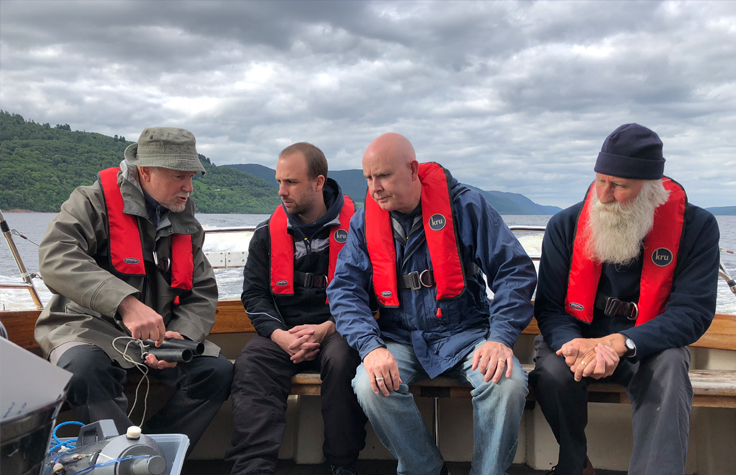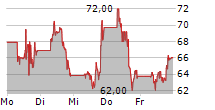
NORTHAMPTON, MA / ACCESSWIRE / January 16, 2025 / Illumina
Professor Neil Gemmell has a new plan to expand environmental DNA collection from the legendary lake
Originally published on Illumina News Center
The platypus is a venomous mammal that lays eggs, can sense electricity, and has 10 sex chromosomes. The tuatara is a reptile from a lineage that evolved before most dinosaurs (and all lizards). The bluehead wrasse is a fish that can change sex. And the Loch Ness monster is, according to the most popular theory explaining over a thousand sightings since the 19th century, a Jurassic-era plesiosaur-a "living fossil" whose descendants have somehow survived to the present day.
What do these zoological oddities have in common? They've all been the research subjects of Professor Neil Gemmell at the University of Otago, New Zealand.
Gemmell first trained as a geneticist in the 1990s, and his interests have always leaned toward the stranger corners of the animal kingdom. So the recent development of environmental DNA (eDNA) collection piqued his interest: All creatures leave behind tiny scraps of DNA in their habitat by nature-skin cells, hair, scales, blood, feces, and so on. By analyzing soil, water, and even air samples, genomic sequencing can reveal an accurate, detailed picture of all the species found there.
A cryptid, or undiscovered animal, must leave behind molecular traces of its presence, same as any other organism. What better way to prove, once and for all, what may be lurking in Loch Ness?
Sequence and ye shall find
In 2016, paleontologist Darren Naish had just published a book on cryptozoology, and Gemmell asked him on social media whether anyone had considered using eDNA sequencing to look for cryptids in Loch Ness.
The discussion didn't get very far, and Gemmell soon forgot about it-until about six months later, when an article speculating on the feasibility of such a project was published, and soon Gemmell's phone and inbox were exploding with inquiries. "It was so much attention for this idea," he says, "more so than for any of the highfaluting science I'd ever done. I'd only opened my mouth and said, 'Hey, we might be able to do this'-I hadn't actually done anything yet!"
He leaned into the wave of public interest. Some of his colleagues thought he might've lost his mind, but he says "there was an opportunity to explain how you do an experiment. How you test for an idea. I thought we could take people on a journey of discovery…and my kids were pretty excited about it too."
How eDNA identification works
When you find a random piece of DNA in a water, soil or air sample, how can you tell what it came from-especially if that creature has never been sequenced before? By comparing the DNA to that of other species we have studied.
For decades now, scientists have been sequencing organisms of every shape and size and adding pieces of their genomes and, increasingly, their whole genome, to vast reference libraries. DNA from an unknown animal would show varying similarities to known animals, based on how closely they're related.
For example: Plesiosaurs were marine reptiles that evolved along a different branch from terrestrial dinosaurs. Plesiosaur DNA would have a lot in common with modern reptiles, but it would diverge in distinct places compared to other creatures it would've shared a common ancestor with-turtles, crocodiles, and dinosaurs. In the same way, a previously unknown kind of, say, giant fish or river dolphin would carry some telltale genes from those branches of the tree of life.
The more species whose genomes have been fully described, the more reliable eDNA identification becomes for discovering new ones, or finding them in unexpected habitats. And the more affordable genomic sequencing becomes, the sooner biologists can achieve this goal.
The eel McCoy
In 2018 the idea became a reality, and Professor Gemmel found himself flying across the world to the Scottish Highlands in pursuit of a monster. He and his team set out into the pleasant midsummer weather in the Deepscan, a tour guide boat conscripted for the task, and lowered their cylindrical sampling containers into the murk.
They traveled the loch's 35-kilometer length, taking just over 250 samples, each consisting of a liter of water sampled, in triplicate, some from close to the loch's deepest regions, 220 meters below the surface. They even traveled upriver to some connected lochs-Cluanie, Oich, Tarff, and Dun Seilcheig-for good measure.
Once their collection was complete, they took the samples to the University of Hull for DNA extraction, then on to the Université Grenoble Alpes in France, where they worked with Senior Researcher Pierre Taberlet, PhD, to prepare them for sequencing. Gemmell, his University of Otago colleague Gert-Jan Jeunen, and Taberlet then personally drove them to Fasteris in Geneva, which used Illumina technology to conduct metabarcoding, a kind of genomic sequencing that can distinguish and identify many different species from a single sample. "Illumina was really integral to making the project happen," Gemmell says. "They provided a lot of the sequencing reagents and technology for free, and other partners, like Fasteris, did the same."
The moment of truth arrived. Had this landmark, first-of-its-kind survey finally revealed a time-lost leviathan?
In a word…no.
In fact, the survey found no reptile DNA of any kind. But it did accurately identify dozens of other species: frogs, toads, ducks, all 13 species of fish known to live in the loch-and plenty of cattle, dog, and human DNA besides. Gemmell explains that the loch sits in the Great Glen, with steep-sided hills and mountains surrounding it that act like a natural funnel, collecting a biological record even from the surrounding land: "We found evidence of species that we knew existed in the area, including some that are reasonably rare or endangered."
So what accounts for all the monster sightings? Well, the only hypothesis he could dismiss was that the monster is a giant eel. Eels were already known to be plentiful in the loch; their DNA was indeed found at every single location sampled, and their slender, undulating bodies may resemble a humpbacked reptile from a distance. But are there giant eels? Gemmell thinks probably not…but that remains at least a possibility.
Back to the drawing board
Case closed? Of course not.
Nessie's true believers remain unconvinced by the results, partly because of the project's necessarily limited scope in what is, by volume, the largest body of water in the British Isles. "Sampling a few hundreds of cubic liters of water is not much in a lake which is estimated to have something like 10 million," Gemmell admits. He heard other objections, too: "'You went at the wrong time of year,' they said. 'You didn't look in the right place.' 'Nessie was on holiday.'"
It's true that the first survey lacked an important dimension: It captured a snapshot of the loch's biodiversity at a single point in time, but its insights could be multiplied by taking further samples on a regular basis.
Water flows northward through the loch and exits to the River Ness (and ultimately the North Sea) at a series of boat locks. Gemmell is now developing a passive eDNA collection system that could be installed in these locks, or even on boats traveling the lake, that would continuously collect and filter samples for sequencing over a year or longer.
He refers to the first survey as a baseline to grow on, for learning how the loch's environment is changing as a whole. "The power is really unlocked when we go back and sample serially, over time," he says. "Then we can see if things are changing. Are there ongoing threats?" He mentions one invasive species, pink salmon, which is native to the Pacific but spread to the North Sea from farms in northern Russia, and can now be found in rivers in the UK. Knowing where pink salmon spawn and where they are emerging would help limit their displacement of native species, such as wild Atlantic salmon.
Gemmell is currently seeking sponsorship for "Loch Ness 2.0," in which he plans to use "shotgun sequencing" rather than targeted sequencing, which can show the proportional change in a species' population over time-the data could track the spread of new pathogens in the area, and be used to make informed predictions about the ecosystem's future health.
He maintains that he doesn't expect to find a monster, but that an updated collection system could accomplish two goals: Shedding further light on the unknown, while serving as a proof of concept that similar studies could be done at scale, to help conservationists understand the biodiversity of ecosystems around the world.
Ultimately, what brings him back to the loch is the enduring mystery it holds in the imagination of so many-the thought of spurring the same excitement he saw in his kids, by telling a fantastic story about science that might reach hundreds or thousands more.
"That's something we all share as humans," he says. "A desire to understand our natural world. One of the things I think we may have forgotten is that we are all explorers and discoverers. Each of us makes new observations every day. Working in science, I have the privilege to embark on that journey of discovery every day in the laboratory. And last time around with Loch Ness 1.0, being able to capture that excitement and communicate it to the world was so much fun."

Eric Verspoor, Gert-Jan Jeunen, Neil Gemmell, and Adrian Shine aboard the boat Deepscan on Loch Ness. | Photo by Neil Gemmell
View additional multimedia and more ESG storytelling from Illumina on 3blmedia.com.
Contact Info:
Spokesperson: Illumina
Website: https://www.3blmedia.com/profiles/illumina
Email: info@3blmedia.com
SOURCE: Illumina
View the original press release on ACCESS Newswire




